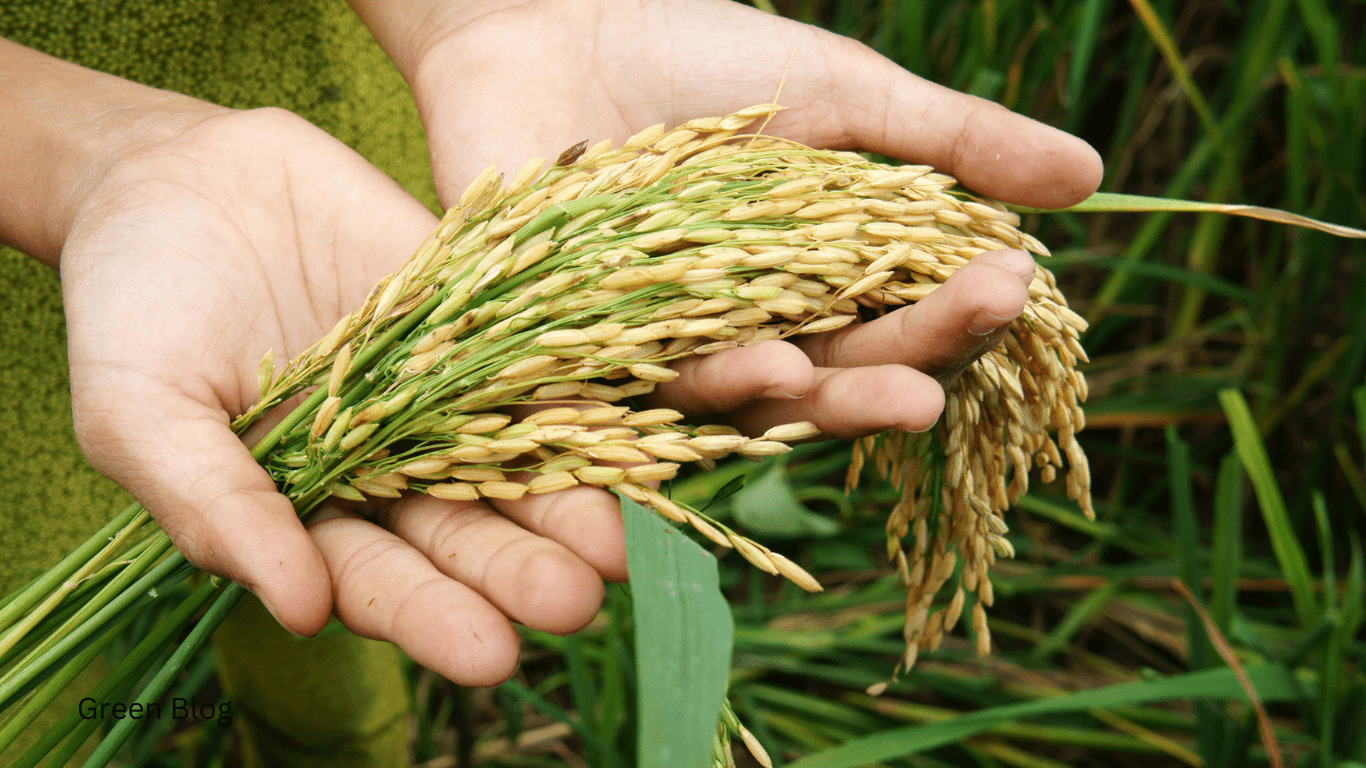1. Introduction
Climate change is one of the most pressing issues of our time, with far-reaching impacts on various aspects of human life, including food security. As global temperatures rise and weather patterns become increasingly unpredictable, the ability to produce sufficient, safe, and nutritious food is under threat. This blog post delves into the intricate relationship between climate change and global food security, exploring how changes in climate are affecting agricultural production, the socioeconomic implications, and potential strategies to mitigate these impacts. By understanding these dynamics, we can better prepare for the challenges ahead and work towards a more resilient and sustainable food system.
2. Understanding Climate Change
Climate change refers to long-term shifts in temperature, precipitation, and other atmospheric conditions on Earth. These changes are primarily driven by human activities, particularly the burning of fossil fuels, deforestation, and industrial processes, which increase the concentration of greenhouse gases (GHGs) in the atmosphere. Key greenhouse gases include carbon dioxide (CO2), methane (CH4), and nitrous oxide (N2O), which trap heat and cause the Earth’s surface temperature to rise.
Historically, the Earth’s climate has undergone natural fluctuations; however, the rapid warming observed over the past century is unprecedented. According to the Intergovernmental Panel on Climate Change (IPCC), global temperatures have increased by approximately 1.2 degrees Celsius since the late 19th century, with significant implications for natural and human systems. Current trends indicate that without substantial efforts to reduce GHG emissions, global temperatures could rise by 2 to 4 degrees Celsius by the end of the 21st century, leading to severe and widespread consequences.
3. Climate Change Effects on Agriculture
Agriculture is particularly vulnerable to the impacts of climate change, as it is heavily dependent on climatic conditions.
Changes in Temperature and Precipitation Patterns
Climate change has led to alterations in temperature and precipitation patterns, affecting the length and quality of growing seasons. Increased temperatures can accelerate crop maturation, reducing yields and compromising quality. For example, wheat and maize yields decline significantly under heat stress, affecting global food supply. Changes in precipitation patterns, such as prolonged droughts and intense rainfall, can disrupt planting and harvesting schedules, increase soil erosion, and reduce water availability for irrigation.

Impact on Crop Yields and Quality
Climate change directly impacts crop yields and nutritional quality. Elevated CO2 levels can enhance photosynthesis and plant growth, but this benefit is often offset by higher temperatures, water scarcity, and increased incidence of pests and diseases. Studies have shown that staple crops like rice, wheat, and maize experience yield reductions under climate stress. Additionally, the nutritional quality of crops is affected, with reduced protein, vitamin, and mineral content observed in key crops under elevated CO2 conditions, posing risks to human health.
Effects on Livestock and Fisheries
Livestock and fisheries are also adversely affected by climate change. Heat stress reduces livestock productivity, affecting milk production, growth rates, and reproduction. Water scarcity and poor pasture conditions exacerbate these impacts, leading to higher mortality rates. Fisheries face challenges from rising ocean temperatures, acidification, and changes in sea currents, which affect fish populations and distribution. For instance, warmer waters have caused shifts in the range of commercially important fish species, impacting fishing communities and economies reliant on seafood.
Case Studies of Affected Regions
Regions worldwide are experiencing the effects of climate change on agriculture. In Sub-Saharan Africa, prolonged droughts have led to significant crop failures, exacerbating food insecurity. In South Asia, unpredictable monsoon patterns disrupt rice and wheat production, threatening livelihoods. Similarly, the Pacific Islands face challenges from sea-level rise and extreme weather events, affecting both agriculture and fisheries. These case studies highlight the urgent need for adaptive strategies to safeguard food security in vulnerable regions.
4. Socioeconomic Implications of Climate Change on Food Security
The impacts of climate change on agriculture extend beyond the farm, influencing broader socioeconomic dynamics.
Food Price Volatility
Climate change contributes to food price volatility by disrupting supply chains and reducing crop yields. Extreme weather events, such as floods and droughts, can devastate agricultural production, leading to shortages and price spikes. For instance, the 2010 Russian heatwave caused a significant drop in wheat production, leading to a global price surge. These fluctuations disproportionately affect low-income populations, who spend a larger share of their income on food, exacerbating hunger and malnutrition.
Impact on Small-Scale Farmers and Rural Communities
Small-scale farmers and rural communities are particularly vulnerable to climate change due to their reliance on rain-fed agriculture and limited access to resources. Crop failures and reduced productivity can push these communities into poverty, increasing food insecurity. Additionally, the loss of agricultural livelihoods can lead to social and economic instability. Supporting small-scale farmers through climate-resilient practices and access to financial services is crucial for enhancing their adaptive capacity.

Migration and Displacement
Climate-induced agricultural disruptions can drive migration and displacement. As farming becomes less viable, rural populations may move to urban areas in search of better opportunities, leading to overcrowded cities and additional stress on urban infrastructure. In extreme cases, entire communities may be forced to relocate due to rising sea levels or persistent droughts, creating climate refugees and raising complex humanitarian challenges.
5. Adaptation and Mitigation Strategies
To address the impacts of climate change on food security, comprehensive adaptation and mitigation strategies are essential.
Agricultural Practices and Technologies
Adopting climate-resilient agricultural practices and technologies is vital for enhancing food security. Techniques such as conservation agriculture, agroforestry, and integrated pest management can improve soil health, increase biodiversity, and reduce vulnerability to climate shocks. Additionally, the use of drought-resistant crop varieties, precision farming technologies, and efficient irrigation systems can optimize water use and boost productivity. Investment in research and development is critical for advancing these technologies and ensuring their widespread adoption.
Policy and International Cooperation
Effective policies and international cooperation are necessary to support climate adaptation and mitigation in agriculture. Governments should implement policies that incentivize sustainable farming practices, provide financial support to farmers, and enhance access to climate information. International cooperation, through initiatives like the Paris Agreement, can facilitate knowledge exchange, funding, and collaborative efforts to address climate change. Strengthening global food systems requires coordinated action across borders and sectors.
Community-Based Approaches
Community-based approaches empower local populations to develop and implement adaptation strategies tailored to their specific needs. Participatory approaches, such as farmer field schools and community seed banks, enable knowledge sharing and collective problem-solving. Engaging communities in decision-making processes ensures that adaptation measures are culturally appropriate and effectively address local challenges.
6. Future Prospects and Solutions
Innovative solutions and forward-looking strategies are essential for building a resilient and sustainable food system in the face of climate change.
Role of Innovation and Research
Innovation and research play a crucial role in developing climate-smart agriculture. Advances in biotechnology, such as gene editing and synthetic biology, offer potential solutions for creating crops that are more resilient to climate stress. Additionally, research into sustainable farming practices, soil health, and ecosystem services can provide valuable insights for improving agricultural sustainability. Supporting interdisciplinary research and fostering collaboration between scientists, farmers, and policymakers is essential for driving innovation.
Sustainable Development Goals
The United Nations’ Sustainable Development Goals (SDGs) provide a comprehensive framework for addressing the interconnected challenges of climate change and food security. Goals such as Zero Hunger (SDG 2), Climate Action (SDG 13), and Life on Land (SDG 15) highlight the need for integrated approaches to sustainable development. Achieving these goals requires concerted efforts to promote sustainable agriculture, protect ecosystems, and enhance resilience to climate change.
Examples of Successful Initiatives
Several successful initiatives demonstrate the potential for climate-smart agriculture to enhance food security. For instance, the Climate-Smart Villages program, implemented by the CGIAR Research Program on Climate Change, Agriculture and Food Security (CCAFS), promotes community-driven adaptation strategies in vulnerable regions. Similarly, the adoption of agroecological practices in Latin America has improved food security and environmental sustainability. These examples showcase the positive impact of innovative and participatory approaches to climate adaptation.
7. Conclusion
Climate change poses significant challenges to global food security, affecting agricultural productivity, food prices, and livelihoods. However, with the right strategies and innovations, it is possible to mitigate these impacts and build a more resilient food system. Addressing the multifaceted effects of climate change on agriculture requires a holistic approach that includes adopting climate-resilient practices, supporting small-scale farmers, and fostering international cooperation. By investing in research and innovation, promoting sustainable development, and engaging local communities, we can create a future where food security is safeguarded against the uncertainties of climate change. Urgent action is needed from all stakeholders, including governments, international organizations, the private sector, and civil society, to ensure a sustainable and food-secure future for all.
8. References and Further Reading
- “Climate Change and Food Security: Risks and Responses” by the Food and Agriculture Organization of the United Nations (FAO)
- “The State of Food Security and Nutrition in the World 2020” by the FAO, IFAD, UNICEF, WFP, and WHO
- “Adapting Agriculture to Climate Change” by the International Food Policy Research Institute (IFPRI)
